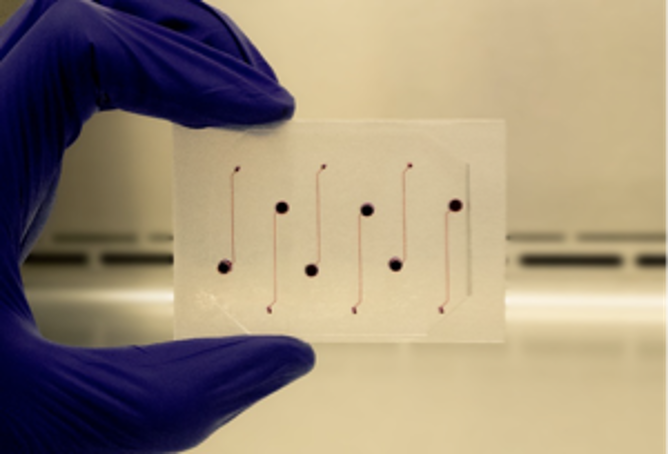Long-term Patient iPC Vessel Chip Model to Assess Stressors of Atherosclerosis and mRNA Therapeutics
Science Objectives
The Long-term Patient iPC Vessel Chip Model to Assess Stressors of Atherosclerosis and mRNA Therapeutics investigation supports transformational engineering of an organ-on-chip (Vessel-Chip) model that incorporates assessment of clinically relevant markers of human vascular cells in a compositionally and geometrically relevant matrix for several months. A salient feature of this platform is that it includes continuous hemodynamic forces of shear stress and pressure will be an extraordinarily useful tool for studying vascular pathobiology and facilitate discovery of drugs with unprecedented reliability. Since age and radiation are the most powerful risk factors for atherosclerotic vascular diseases, the primary focus in this investigation will be to model these stressors and next-generation therapeutics including patient-derived iPSC cells associated with aging and applying proton radiation under space-relevant conditions.
Experiment Description
Vascular diseases with aggressive atherosclerosis can often be fatal depending on risk factors with age and radiation exposure during space travel being two of the most critical. The Long-term Patient iPC Vessel Chip Model to Assess Stressors of Atherosclerosis and mRNA Therapeutics investigation will study vascular signaling mechanisms in order to identify therapeutics for aging and radiation-related vascular diseases. Recent advances in organ-on-chip technology or microphysiological systems (MPS) have permitted co-culture of human cells in physiologically relevant microfluidic environments which allowed continuous perfusion, providing an alternative in vitro approach to mimic human disease.
Space Applications
Radiation exposure during space travel is a major risk factor for atherosclerosis and blood clotting in astronauts. Without Earth’s magnetosphere, astronauts are chronically exposed to high-Z and energy particles (HZE), which are particularly damaging to biological tissues as they can penetrate deeper layers of shielding materials than Earth’s gamma rays and X-rays. Experimental models of long durations are needed to assess formation of lesions and clots. The goal of this investigation is to mimic the space environment by exposing vessel-chips to low-flux proton radiation and demonstrate the development of clinical vascular disease. Further, the current mRNA therapeutic has shown a reversal of DNA damage in hiPSC-derived vascular cells. Therefore, the proposal to uncover this therapeutic effect to reverse radiation injury would also be significant.
Earth Applications
Radiation exposure in cancer therapy is also responsible for cardiovascular disease in patients. Studying radiation will help develop strategies to treat radiation-induced injury also amongst patients on Earth. Researchers will also assess aging-induced vascular disease in this investigation, since this is a main factor responsible for atherosclerosis. To study this, researchers will make vessel chips from iPSC-derived vascular cells from progeria patients who exhibit symptoms of aging and vascular disease. These patients’ cells will model age-induced disease and will provide a way to find mRNA treatments.
Team
Principal Investigator
Abhishek Jain, PhD
Texas A&M University College of Engineering, College Station, Texas, United States
Co-Investigator
John Cooke, MD, PhD
Houston Methodist, Houston, Texas, United States
Guangyu Wang, PhD
Houston Methodist, Houston, Texas, United States
Nhat-Tu Le, PhD
Houston Methodist, Houston, Texas, United States
Vladislav Yakovlev, PhD
Texas A&M University College of Engineering, College Station, Texas, United States































